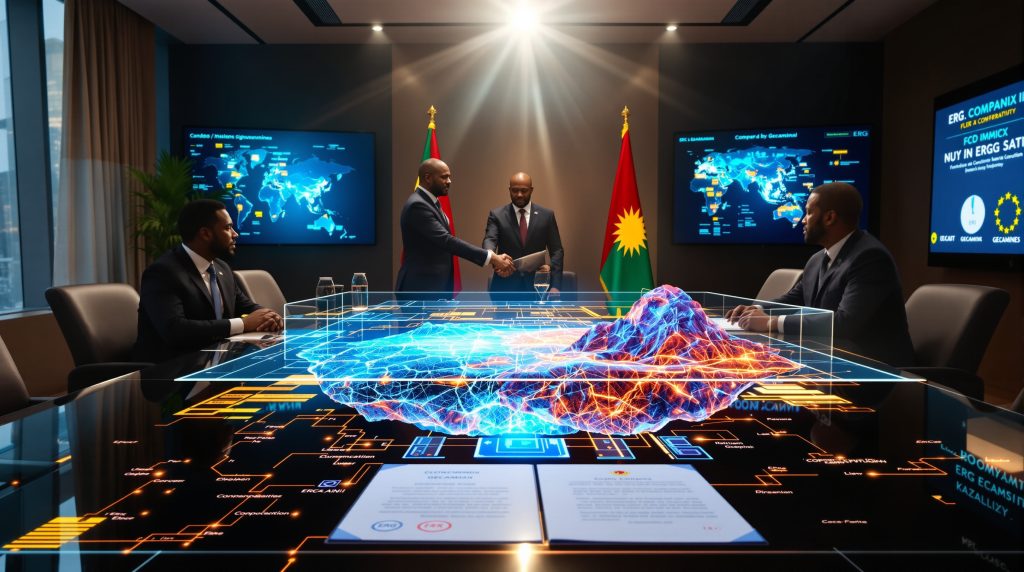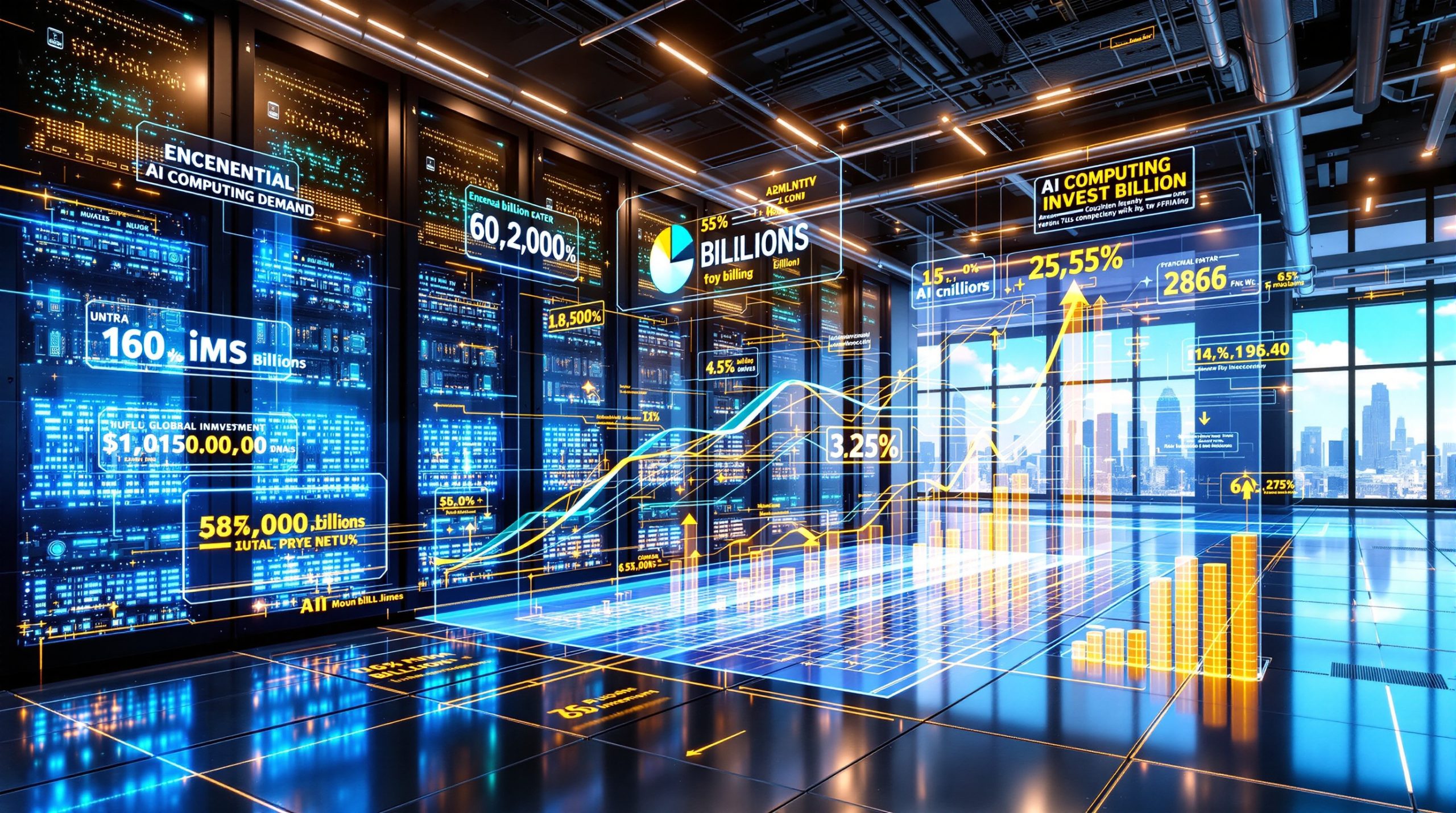Understanding the ERG-Gécamines Settlement: A Turning Point for Congo's Copper and Cobalt Mining
The recent settlement between Eurasian Resources Group (ERG) and Gécamines marks a significant development in the Democratic Republic of Congo's mining sector. This resolution ends a contentious dispute that had suspended development of crucial copper and cobalt deposits, potentially unlocking substantial mineral resources in one of the world's most mineral-rich regions. The agreement, reached during Congolese President Felix Tshisekedi's diplomatic visit to Kazakhstan, establishes a new framework for cooperation that could reshape mining partnerships in the region.
What Led to the Dispute Between ERG and Gécamines?
Historical Context of the Swanmines Project
The Swanmines project represents one of the most strategically important copper and cobalt developments in the DRC's mineral-rich Katanga province. This region contains some of the world's highest-grade copper deposits, with concentrations often exceeding 3% copper content—significantly higher than the global average of 0.6-0.8%.
ERG, formerly known as ENRC, established its presence in Congo's mining sector in 2009 through a series of strategic acquisitions. Over the following years, the Kazakh mining giant expanded its footprint across multiple mining operations in the country. The company's commitment to the region has been substantial, with investments exceeding $9 billion across various projects, demonstrating the strategic importance of Congo's mineral wealth to ERG's global portfolio.
The Swanmines project specifically was positioned to become a cornerstone of ERG's copper and cobalt production capacity in the region, with projected outputs that would have significantly contributed to global copper supply forecast and cobalt markets.
Origins of the 2023 Conflict
The dispute between ERG and Gécamines erupted in 2023, stemming from disagreements over project development timelines, investment commitments, and revenue sharing arrangements. According to industry analysts, one of the central points of contention involved Gécamines' desire for increased participation in project governance and a larger share of economic benefits.
The conflict escalated when ERG allegedly failed to meet certain development milestones outlined in the original joint venture agreement, prompting Gécamines to seek remediation. This led to the suspension of development activities at several promising copper and cobalt deposits, effectively freezing hundreds of millions of dollars in potential mineral production.
The suspension came at a particularly inopportune time, as global demand for cobalt—a critical component in electric vehicle batteries—was experiencing significant growth amid the global energy transition. With the DRC accounting for approximately 70% of global cobalt production, the dispute had implications that extended far beyond the two companies involved.
The ICC Arbitration Process
As tensions mounted, the dispute was elevated to the International Chamber of Commerce (ICC) arbitration court in Paris in late 2023. This move signaled the seriousness of the conflict and the inability of the parties to reach an agreement through direct negotiation.
The ICC arbitration process provided a structured international forum for addressing the complex legal and commercial issues at stake. Under ICC rules, a panel of arbitrators would have been appointed to evaluate the claims and counterclaims of both parties, considering the terms of the original agreements, applicable Congolese mining law, and international investment principles.
Mining disputes in the DRC are governed by a complex legal framework that includes the Mining Code (revised in 2018), investment protection treaties, and specific joint venture agreements. This legal complexity, combined with the strategic importance of the minerals involved, made the ERG-Gécamines dispute particularly challenging to resolve through conventional arbitration channels.
How Was the Settlement Agreement Reached?
Diplomatic Intervention and Presidential Involvement
The breakthrough in resolving this high-stakes dispute came during Congolese President Felix Tshisekedi's diplomatic visit to Kazakhstan. This high-level intervention underscores the strategic importance of the mining sector to the DRC's economic development agenda and the priority placed on resolving impediments to mineral production.
The timing of President Tshisekedi's involvement is noteworthy, occurring against a backdrop of increasing global competition for critical minerals strategy essential to the energy transition. The presidential engagement elevated what had been a corporate dispute to the level of bilateral state relations, creating a diplomatic framework for resolution that went beyond the commercial interests of the individual companies.
This approach reflects a growing trend in resource-rich nations where state leadership takes an active role in facilitating solutions to major mining disputes, recognizing their broader economic and strategic implications.
Key Terms of the Settlement
While the full details of the settlement over DRC Swanmines project have not been publicly disclosed, the announcement confirmed that the framework establishes a path forward for the Swanmines project and significantly expands Gécamines' participation rights. This expansion of the state-owned miner's role aligns with broader trends across Africa where governments are seeking greater control and benefits from their natural resources.
Industry analysts suggest the settlement likely includes revised ownership structures, enhanced governance roles for Gécamines, updated investment commitments from ERG, and potentially revised fiscal terms that increase the Congolese state's share of project revenues.
The agreement also presumably establishes new mechanisms for ongoing dispute resolution, aiming to prevent future impasses that could derail production. These might include more frequent joint review periods, clearer performance metrics, and escalation procedures that engage both corporate and government stakeholders before disputes reach arbitration.
Comparative Analysis with Similar Mining Settlements
This settlement follows a pattern seen in other African mining jurisdictions, where initial foreign investment agreements have later been renegotiated to increase state participation and benefits. Similar restructurings have occurred in countries like Tanzania, Zambia, and Guinea, reflecting a continental shift toward "resource nationalism" that seeks to maximize domestic benefits from extractive industries.
What distinguishes the ERG-Gécamines settlement is the diplomatic channel through which it was achieved, bypassing the formal ICC arbitration process in favor of a negotiated solution facilitated by head-of-state engagement. This approach may establish a precedent for resolving similar disputes in the region, particularly for strategically important mineral projects.
The settlement appears to balance the competing interests at play: ERG maintains its position in a valuable mineral project while accommodating Gécamines' demands for greater participation, and the DRC secures the continued development of critical mineral resources essential to its economic growth.
What Are the Economic Implications of the Settlement?
Impact on Congo's Copper and Cobalt Production
With the dispute resolved, development activities at the Swanmines project can now resume, potentially adding significant copper and cobalt production capacity to Congo's mineral output over the coming years. While specific production targets have not been publicly announced, industry experts estimate that fully developed, the project could produce tens of thousands of tons of copper and several thousand tons of cobalt annually.
This additional production capacity comes at a critical time for global markets. Copper demand is projected to grow by 50-70% by 2035, driven by electrification and renewable energy infrastructure. Meanwhile, cobalt remains essential for high-performance batteries, despite ongoing efforts to reduce dependence on the mineral through alternative battery chemistries.
The resumption of development activities will likely follow a phased approach, with initial focus on the most readily accessible deposits, followed by expansion into more challenging geological zones. This gradual ramp-up means the full production impact may not be felt for 3-5 years, though incremental increases should begin much sooner.
Investment Climate Effects
The successful resolution of this high-profile dispute sends a positive signal to international investors about the DRC's commitment to addressing challenges in its mining sector. The diplomatic approach to settlement, rather than prolonged litigation, demonstrates pragmatism that may encourage further capital inflows.
However, investment analysts remain cautious, noting that this single resolution must be viewed within the broader context of the DRC's challenging operating environment. Factors including infrastructure limitations, regulatory complexity, security concerns, and political risks continue to influence investment decisions in the country's mining sector.
The settlement may serve as a template for resolving other existing disputes in the Congolese mining sector, potentially unlocking additional projects currently facing similar challenges. This cascade effect could substantially improve investor perception if it leads to a pattern of constructive problem-solving rather than adversarial standoffs.
Local Economic Benefits
The revival of the Swanmines project promises significant local economic benefits. At full operation, the project could create thousands of direct jobs and many more indirect employment opportunities through supply chains and service providers. Mining projects of this scale typically generate substantial local procurement spending, benefiting businesses in surrounding communities.
Community development initiatives are likely to form part of the settlement agreement, potentially including investments in local infrastructure, education, healthcare, and other social priorities. Modern mining agreements increasingly incorporate specific community benefit provisions that go beyond tax and royalty payments to address local development needs directly.
For the Congolese government, the resumed project represents an important source of future tax revenue, royalties, and dividends through Gécamines' participation. These financial flows will contribute to national development priorities if effectively managed and transparently administered.
Why Is This Settlement Strategically Important?
Global Critical Minerals Supply Chain Significance
The strategic importance of this settlement extends far beyond the borders of the DRC. As the world accelerates its transition to clean energy technologies, secure supplies of copper and cobalt have become matters of national security for many countries.
Copper serves as the fundamental conductor for electricity transmission and is irreplaceable in renewable energy systems, electric vehicles, and energy-efficient buildings. Global copper demand is projected to exceed supply by several million tons annually by 2030 without significant new production capacity.
Cobalt remains a critical component in high-energy-density batteries despite ongoing research into alternatives. The DRC's dominance in global cobalt production—approximately 70% of world supply—makes any significant Congolese mining project a matter of global supply chain interest.
The Swanmines project's revival could help moderate projected supply deficits in these critical minerals, potentially stabilizing prices and supporting the global energy transition. This stability is particularly important as major economies compete to secure mineral resources essential to their industrial and climate policies.
Geopolitical Considerations
The settlement strengthens bilateral relations between Kazakhstan and the DRC, two resource-rich nations that have not historically maintained close diplomatic ties. This emerging relationship could develop into a broader strategic partnership encompassing additional economic and political dimensions.
The resolution also occurs within the context of intensifying competition between China and Western nations for influence in Africa's mineral-rich regions. China has established a dominant position in Congo's mining sector over the past decade, while Western nations have recently renewed their engagement with African resource producers.
ERG itself reflects these complex geopolitical dynamics, operating as a Eurasian company with significant operations across multiple continents. The company's ability to navigate both Western and Eastern spheres of influence positions it uniquely within global mining industry innovation and politics.
Regional stability in Central Africa also stands to benefit from the successful resolution of high-profile disputes like this one. Resource conflicts have historically contributed to instability in the region, while cooperative development frameworks can reinforce governance improvements and economic growth.
Corporate Strategy Evolution
The settlement reflects an evolution in ERG's approach to partnership with state-owned mining companies. Like many international miners, ERG has adapted its strategy to accommodate increasing expectations for local participation, responding to the shifting balance of power between multinational corporations and resource-owning states.
For Gécamines, the agreement represents a continuation of its efforts to transform from a primarily operational mining company to a strategic asset manager for the Congolese state. This evolution mirrors the path taken by other African state mining companies that have prioritized partnership oversight and revenue capture over direct operational control.
The settlement potentially establishes new models for public-private cooperation in extractive industries, balancing commercial viability with national development objectives. These hybrid approaches recognize both the technical and financial contributions of international mining companies and the legitimate sovereignty interests of resource-owning nations.
What Challenges Remain for the Swanmines Project?
Implementation Hurdles
Despite the settlement agreement, significant implementation challenges remain before the Swanmines project can reach its full potential. Regulatory approvals, including updated environmental permits and possibly revised mining licenses, must still be secured from various Congolese authorities.
Environmental and social impact management presents another major challenge. The project must comply with increasingly stringent standards for waste management, water usage, biodiversity protection, and community engagement. Modern mining practices require comprehensive management plans for each of these dimensions, with regular monitoring and reporting.
Perhaps most critically, infrastructure limitations could constrain the project's development timeline. The DRC continues to face significant challenges in power supply, transportation networks, and technical services essential to large-scale mining operations. Addressing these constraints may require substantial additional investments beyond the mine development itself.
Market Condition Variables
The economic viability of the Swanmines project remains subject to global market conditions for copper and cobalt, both of which have experienced significant price volatility in recent years. Copper prices have fluctuated between approximately $6,000 and $10,000 per ton since 2020, while cobalt has seen even more dramatic swings between $30,000 and $80,000 per ton.
Competing global supply developments also influence the project's prospects. Major new copper projects in countries including Chile, Peru, and Indonesia are advancing simultaneously, potentially affecting market balance and price outlooks. Similarly, cobalt project expansion is increasing in Indonesia and elsewhere, though not at scales that would displace Congo's market dominance.
Demand forecasts for battery minerals through 2030 remain robust but increasingly nuanced. While overall demand growth appears certain, the specific minerals mix continues to evolve as battery technologies advance. Manufacturers are working to reduce cobalt intensity in batteries, though technical limitations suggest cobalt will remain essential for high-performance applications for at least the current decade.
Governance and Transparency Factors
Effective implementation of the settlement will require robust governance mechanisms to ensure both parties fulfill their commitments. Monitoring frameworks, reporting requirements, and independent verification processes will be essential to maintaining trust and preventing future disputes.
Transparency in project development and benefit distribution represents another ongoing challenge. International standards increasingly demand public disclosure of mining contracts, payments to governments, and environmental performance. Meeting these expectations while protecting legitimate commercial confidentiality requires careful balance.
Stakeholder engagement processes will need to be comprehensive and ongoing, incorporating not only the corporate and government parties to the settlement but also local communities, civil society organizations, and other affected groups. Securing and maintaining social license to operate has become as critical to mining success as technical and financial factors.
How Does This Settlement Reflect Broader Mining Trends?
Evolution of Resource Nationalism
The ERG-Gécamines settlement exemplifies the evolving nature of resource nationalism in Africa and globally. Rather than the outright nationalizations that characterized earlier eras, modern resource nationalism typically seeks increased state participation, higher tax takes, and greater local economic integration while maintaining international investment.
This balanced approach recognizes both the sovereignty rights of resource-owning nations and the practical reality that most require international capital, technology, and expertise to develop their mineral wealth effectively. The settlement appears to embrace this middle path, expanding Gécamines' role while preserving ERG's core investment.
Compared to other African nations' approaches, the DRC has pursued a relatively moderate form of resource nationalism, seeking increased benefits through negotiation rather than unilateral action. This contrasts with more aggressive approaches seen in countries like Tanzania and Zambia, which have used legislative changes and tax demands to rapidly alter terms with foreign miners.
The long-term sustainability of this new cooperation model depends on its ability to deliver meaningful benefits to both parties through changing market conditions and political circumstances. History suggests that mining agreements that fail to adapt to changing conditions eventually face renegotiation pressures, regardless of their initial terms.
ESG Considerations in Mining Agreements
Modern mining agreements increasingly incorporate comprehensive environmental, social, and governance (ESG) provisions, reflecting both regulatory requirements and stakeholder expectations. While specific ESG elements of the ERG-Gécamines settlement have not been publicly detailed, they likely form a substantial component of the new framework.
Environmental protections have become particularly critical in Congo's mining sector, which has historically faced challenges with pollution, deforestation, and habitat disruption. New mining operations typically require advanced waste management systems, water recycling technologies, and comprehensive rehabilitation plans.
Social responsibility commitments likely include local employment targets, community development funds, and provisions for addressing project impacts on nearby communities. Leading practice now extends beyond compensation to emphasize sustainable development outcomes that persist beyond the mine's operational life.
Governance improvements for project oversight probably feature prominently in the settlement, potentially including joint management committees, enhanced information sharing, and dispute prevention mechanisms. These governance structures aim to promote collaboration rather than confrontation between the state and private partners.
Technology and Innovation Factors
The revitalized Swanmines project will likely incorporate modern extraction methods that improve efficiency, reduce environmental impacts, and enhance worker safety compared to older operations in the region. Technological advances in areas such as automation, digitalization, and process optimization have transformed mining productivity and sustainability in recent years.
Efficiency improvements over previous operations could include advanced ore sorting, precision blasting techniques, and optimized processing circuits that maximize metal recovery while minimizing energy and water consumption. These innovations can significantly improve project economics while reducing environmental footprints.
Value-addition possibilities within the DRC represent an increasingly important consideration in mining agreements. Rather than exporting raw or minimally processed minerals, there is growing interest in developing intermediate processing capacity within the country. This could include producing copper cathodes rather than concentrates, or cobalt hydroxide rather than raw ore, capturing more of the value chain domestically.
What Can We Expect Next for the Swanmines Project?
Development Timeline Projections
Following the settlement, the Swanmines project will likely follow a phased development approach beginning with detailed technical studies and permitting processes. Industry standard timelines suggest comprehensive feasibility studies could require 12-18 months, followed by engineering design and procurement phases of similar duration.
Actual construction activities would likely commence within 24-36 months of the settlement, assuming all regulatory approvals are secured. Initial production might begin 3-4 years after the agreement, with full capacity achieved over subsequent years as additional deposits are developed and processing facilities expanded.
Capital expenditure scheduling will be critical to managing project risk and maintaining investor confidence. Modern mining developments typically stagger investments to allow initial revenue generation before committing to full-scale development. For a project of Swanmines' scale, total capital requirements could reach into billions of dollars, necessitating careful financial planning and possibly phased funding approaches.
Success Metrics to Monitor
Several key indicators will signal the settlement's successful implementation. Initial investment flows resuming to the project would provide the first tangible evidence of progress, followed by visible development activities at the site.
Regulatory progress indicators to watch include the issuance of updated environmental permits, approval of mining plans, and any necessary amendments to licenses or concession agreements. These bureaucratic milestones often prove challenging in the DRC's complex administrative environment.
Community engagement benchmarks will also demonstrate implementation progress. These might include establishment of local consultation mechanisms, commencement of community development initiatives, and transparent communication about project timelines and impacts.
Production milestones, when eventually reached, will provide the most definitive measure of the settlement's success. Initial copper and cobalt output, followed by steady production increases, would confirm that the project has moved beyond planning to operational reality.
Potential Obstacles and Risk Factors
Political stability remains a critical variable for the project's long-term success. The DRC has experienced periodic episodes of political uncertainty that have affected mining investment in the past. Upcoming election cycles could introduce additional policy uncertainties that might impact project development.
Market condition dependencies create unavoidable risks for any major mining project. Sustained price declines in either copper or cobalt could affect development decisions, potentially leading to scaled-back plans or extended timelines. Conversely, strong market conditions might accelerate development to capture favorable prices.
Technical challenges in implementation could include geological complexities, water management issues, or metallurgical complications that affect recovery rates. While modern exploration and testing methods reduce these risks, mining projects routinely encounter unexpected technical hurdles during development.
Financing constraints could emerge despite the settlement agreement. Global capital markets for mining projects fluctuate with commodity prices, interest rates, and general risk appetite. Securing the substantial funding required for full development remains contingent on favorable market conditions and investor confidence in both the specific project and the DRC's broader investment climate.
The project will also need to navigate industry consolidation trends that could affect partner relationships and capital allocation decisions across the global mining sector.
FAQ: ERG-Gécamines Settlement
What minerals will the Swanmines project produce?
The Swanmines project will primarily produce copper and cobalt, two critical minerals essential for the global energy transition. Copper is fundamental to electrical systems, renewable energy infrastructure, and industrial applications, while cobalt is a key component in high-performance batteries for electric vehicles and energy storage systems.
How significant is this settlement for Congo's mining sector?
This resolution represents a major breakthrough for stabilizing foreign investment in the DRC's mining sector. By demonstrating that complex disputes can be resolved through diplomatic channels rather than prolonged litigation, the settlement potentially establishes a model for addressing other mining conflicts in the country. The outcome balances increased state participation with continued international investment, potentially setting a precedent for how similar partnerships are structured.
What was ERG's total investment in Congo before this dispute?
ERG has invested more than $9 billion in various projects in the Democratic Republic of Congo since beginning operations there in 2009. This substantial commitment reflects the strategic importance of Congolese mineral resources to ERG's global portfolio and the company's long-term presence in the country despite operational and political challenges.
How will local communities benefit from the settlement?
While specific community benefit provisions have not been publicly detailed, modern mining agreements typically include frameworks for local employment, skills development, and community investment programs. The project will likely create thousands of direct and indirect jobs during construction and operation phases. Infrastructure improvements, health and education initiatives, and local business development programs would typically form part of the community benefits package for a project of this scale.
What role did international arbitration play in the resolution?
Although the dispute was initially taken to the International Chamber of Commerce (ICC) in Paris, the final settlement was reached through diplomatic channels during high-level government engagement between Kazakhstan and the DRC. This outcome demonstrates that formal arbitration processes can sometimes serve as leverage for negotiated solutions rather than proceeding to final rulings. The threat of binding arbitration likely encouraged both parties to seek a mutually acceptable resolution through alternative channels.
Further Exploration
Readers interested in learning more about mining developments in the Democratic Republic of Congo can explore related educational content available on Mining.com, which regularly covers mining industry news and developments in critical minerals markets. Understanding the complex interplay of technical, commercial, and political factors in major mining projects provides valuable context for following developments in global mineral supply chains that increasingly influence both industrial policies and energy transition strategies worldwide.
Ready to Profit from the Next Major Mineral Discovery?
Discovery Alert's proprietary Discovery IQ model instantly identifies significant ASX mineral discoveries, turning complex geological data into actionable investment opportunities before the broader market recognises their potential. Explore how historic discoveries have generated substantial returns by visiting the Discovery Alert discoveries page and position yourself ahead of the market with real-time alerts.




